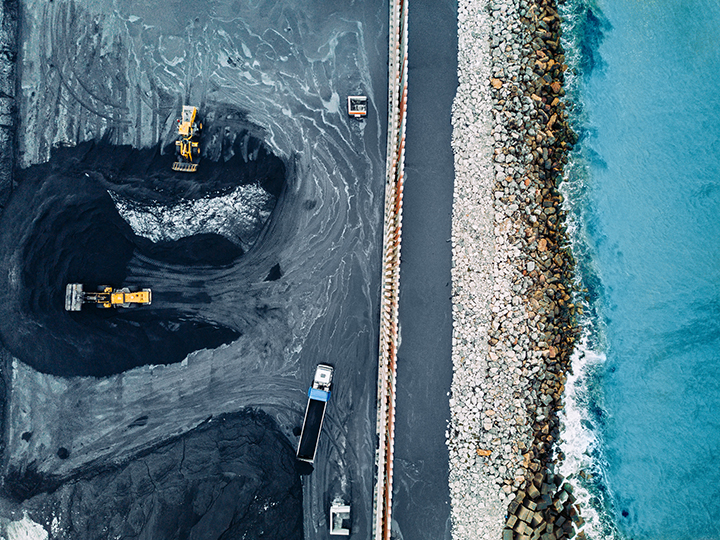Five Ways to Promote Mitigation and Adaptation in the Mining Sector
In the face of the climate crisis, there is an urgent need for the mining sector to adapt to the impacts of climate change.
Climate change is altering where rain falls, how much of it falls, and when it falls, with consequent impacts on where many of us can live and work.
We’re battling more frequent and intense hurricanes and wildfires, while rising sea levels threaten the long-term viability of coastal communities. It’s affecting ecosystems, bleaching coral reefs, threatening fish populations, melting glaciers and displacing species.
Greenhouse gas emissions are the principle culprit, and the mining sector—as a significant user of energy resources—is a key industry contributor. In Australia, for example, the mining sector consumes 500 petajoules of energy per year, which amounts to approximately 10 per cent of the country’s total energy use. Most of this energy is supplied by diesel (41 per cent) and natural gas (33 per cent), and the total amount of energy used in Australia each year is growing with increasing mining volumes.

Many companies are responding to the climate challenge by investing in efforts to reduce their greenhouse gas emissions, contributing to global efforts to mitigate climate change. Glencore’s Raglan nickel mine in Quebec and Rio Tinto’s Diavik diamond mine in Northwest Territories—both in Canada—have installed on-site wind turbines to offset some of their reliance on diesel. Newcrest’s Lihir gold mine in Papua New Guinea draws a significant portion of its energy from geothermal sources. IAMGOLD’s Rosebel gold mine in Suriname and B2Gold’s mine in Namibia have installed solar grids on site, which will be transferred to local communities to meet their energy needs once the mine closes. Goldcorp is pursuing full electrification at its Borden Lake deposit, and plans to make the mine Canada’s first all-electric operation, and the world’s first diesel-free hard rock mine. Much more needs to be done, but these are encouraging steps in the right direction.
In the face of the climate crisis, there is an equally urgent need for the mining sector to adapt to the impacts of climate change, for a number of reasons. The sector is a significant user of local water and energy resources, both of which will be impacted by a changing climate. Operations and supply chains are exposed to extreme weather events, including cyclones, flooding and drought. Employee health and safety could be threatened by rising temperatures. Sea levels and storm surges could challenge the viability of coastal and offshore mining. Investments in climate change adaptation in and around mine sites will help the mining sector manage the risks that climate change poses to operations and supply chains. Such investments can also help to build the adaptive capacities of communities adjacent to mine sites.
What can governments do to help those operating in the mining sector take action on climate change?
Generate and share climate change information: Governments can play a crucial role in generating and sharing information on climate change with private sector stakeholders to address knowledge gaps and promote best practices.
Develop supportive institutional arrangements: Governments can establish institutional arrangements that involve the private sector in national-level planning and action on climate change, including the country’s National Adaptation Planning (NAP) process and its Nationally Appropriate Mitigation Actions (NAMAs).
Build capacities: Mining companies may lack the technical capacities needed to adapt their operations in the face of a changing climate and to reduce their emissions. Governments can provide private sector actors with capacity building and training to better equip them to understand and act on climate change information.
Establish a supportive policy and regulatory framework: Governments should develop policies, laws and regulations that encourage and support investments in mitigation and adaptation within the mining sector, including through the permitting process.
Finance adaptation: Financial barriers can prevent mining companies from engaging in mitigation and adaptation processes. Governments can use financial incentives as motivation for the private sector to invest in new products or operational methods that lower their emissions or increase their climate resilience.
Governments have a crucial role to play in supporting the transition toward a low-carbon economy and increased climate resilience in the sector. They must ensure that enabling conditions are in place within their jurisdictions that allow and encourage mining and mineral exploration companies to invest in renewable energy and adaptation activities. Well-planned and implemented mitigation and adaptation actions from the mining sector, as well as from the private sector more broadly, will help countries achieve a number of their international commitments, including Sustainable Development Goals 7 and 13, the Nationally Determined Contributions agreed upon under the Paris Climate Agreement, and the Sendai Framework for Disaster Risk Reduction.
You might also be interested in
IGF Case Study: Decarbonization of the Mining Sector
Case studies from Chile, Indonesia, and South Africa that delve into the role of the mining sector in efforts to reduce greenhouse gas (GHG) emissions.
Leveraging Digital Infrastructure for Mining Community Resilience
This report explores the socio-economic impacts and potential of new technologies in the mining sector.
What Is the NAP Assessment at COP 29, and Why Does It Matter?
At the 29th UN Climate Change Conference (COP 29) in Baku, countries will assess their progress in formulating and implementing their National Adaptation Plans. IISD’s adaptation experts Orville Grey and Jeffrey Qi explain what that means, and what’s at stake.
IISD Annual Report 2023–2024
While IISD's reputation as a convenor, a trusted thought leader, and a go-to source on key issues within the sustainable development field is stronger than ever, the work happening outside the spotlight is just as valuable.
